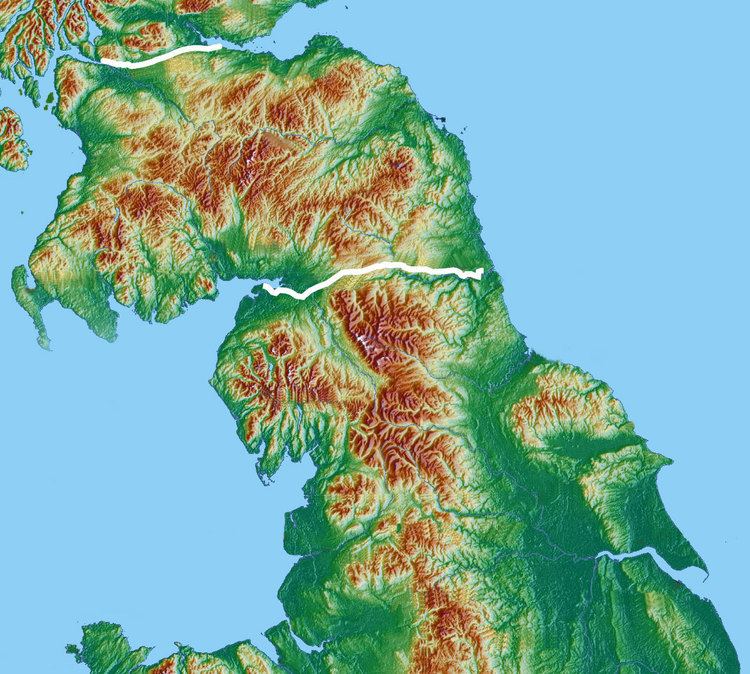 | ||
The Attacotti (Atticoti, Attacoti, Atecotti, Atticotti, Atecutti, etc. variously spelled) were a people who despoiled Roman Britain between 364 and 368, along with Scotti, Picts, Saxons, Roman military deserters, and the indigenous Britons themselves. The marauders were defeated by Count Theodosius in 368.
Contents
- Ammianus Roman Britain in 364369
- Notitia Dignitatum Roman auxilia palatina
- Possible Irish connection
- References
Units of Attacotti are recorded about 400 AD in the Notitia Dignitatum, and one tombstone of a soldier of the Atecutti is known. Their existence as a distinct people is given additional credence by two incidental references to them, as cannibals and as having wives in common, in the writings of Saint Jerome.
Ammianus: Roman Britain in 364–369
The historian Ammianus provides an account of the tumultuous situation in Britain between 364 and 369, and he describes a corrupt and treasonous administration, native British troops (the Areani) in collaboration with the barbarians, and a Roman military whose troops had deserted and joined in the general banditry. The situation arose as a consequence of the failed imperial power-grab (350-353) by Magnentius (303-353), followed by a bloody and arbitrary purge conducted by Paulus Catena in an attempt to root out potential sympathisers of Magnentius in Britain, and aggravated by the political machinations of the Roman administrator Valentinus.
Ammianus describes the marauders as bands moving from place to place in search of loot. Nevertheless, one Roman commander was killed in a pitched battle and another was taken prisoner in an ambush and killed. (See Great Conspiracy.) As there was no longer an effective military force in the province, a substantial one was sent from Gaul under Count Theodosius, who quickly and ruthlessly restored order. Theodosius then focused his efforts on the repair of political problems within the province.
Notitia Dignitatum: Roman auxilia palatina
The Notitia Dignitatum is a list of offices of the early 5th century Roman Empire, and includes the locations of the offices and the staff (including military units) assigned to them. The names of several auxilia palatina resemble that of the Attacotti who were mentioned by Ammianus, and in an 1876 publication, historian Otto Seeck assigned the name Atecotti to various spellings ("acecotti", "atecocti", "attecotti", "attcoetti", "[illegible]ti", and "arecotti") in the Notitia Dignitatum, and documented his assignments within the publication. This produced four conjectural occurrences of Atecotti-related units:
The discovery of a contemporary funerary dedication to a soldier of the "unit of Atecutti" (emended from "Ategutti") at Thessalonica, in the Roman Diocese of Illyricum, supports this reconstruction, as the Notitia Dignitatum places one Atecotti unit in that diocese.
Possible Irish connection
Perhaps as early as the 17th century, and certainly in the 18th and 19th centuries, some Irish scholars (Charles O'Conor and John O'Donovan, for example) had suggested that the origin of the Attacotti might lie in Ireland. This was based on the perceived similarity between Latin Attacotti and the Old Irish term aithechthúatha, a generic designation for certain Irish population groups, usually translated "rent-paying tribes", "vassal communities" or "tributary peoples". In the context of well-attested Irish raids on the western coast of Britain in the late Roman period, it was suggested that one or more of these population groups might be the raiders reported by Ammianus in the 360s.
The thesis was given impetus when historian Charles O'Conor promoted it in the late 18th century. However, this remained controversial among scholars into the late 19th century.
Later scholarship has diminished the notability of these early arguments by criticising the possible connection between Latin Attacotti and aithechthúatha on etymological grounds. Early scholars had based their arguments on the Old Irish that was known from medieval manuscripts rather than on the largely hypothetical Primitive Irish used in the 4th century when the Attacotti were in Britain.
Knowledge and understanding of the history of the Irish language were revolutionised from the end of the 19th century, largely owing to the efforts of Rudolf Thurneysen (1857–1940), who is considered the father of the modern discipline of philology. He hypothesised that Attacotti and aithechthúatha are unconnected, and that the Primitive Irish equivalent to aithechthúatha would be *Ateûiācotōtās. This, in his opinion, is too far removed from the Latin form Attacotti in Ammianus. More recent research has shown that some of the Irish population groups involved in the raiding and settlement of Roman and/or sub-Roman Britain could be classified as aithechthúatha, however, problems of chronology and identification persist.
